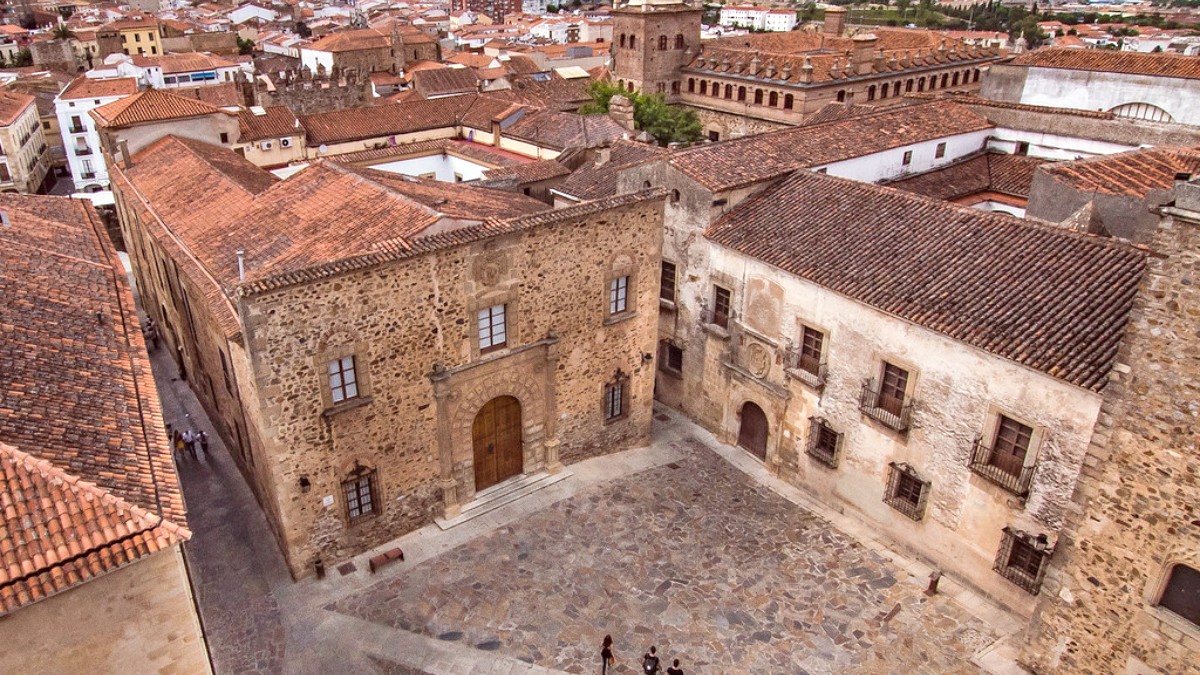
Extremadura, Spain
Extremadura's diverse landscapes have ample opportunities for outdoor activities, specifically hiking and birdwatching.
Several marked trails are around the periphery of Caceres, for easy to moderate walks. The "Ruta de los Lagares" (Wine Press Route), exploring historical wine-making areas, or paths to the "Santuario de la Montaña," with city views. These routes are accessible and create a pleasant escape into nature without traveling far.
This park has an extensive network of trails with varying difficulty. You find easy walks for families and more challenging hikes for experienced trekkers. Monfragüe is especially good for birdwatching, as many trails lead to prime raptor viewing spots. Information on specific trails is at the park's visitor center.
Further afield (needs a longer drive), these regions in northern Extremadura have more rugged mountain hiking opportunities, with dramatic landscapes and traditional villages. These are for multi-day hiking trips or more intense day excursions.
The historic center's narrow, winding, cobbled streets are not good for cycling, especially at night or when crowded.
Caceres provides unique cultural immersion through workshops, performances, and festivals.
Check local listings for cultural performances. The Gran Teatro in Caceres hosts various events, including flamenco shows, classical music concerts, and theatrical performances.
Traditional ceremonies often tie to religious festivals. Holy Week (Semana Santa) in Caceres is a major event with elaborate processions and deeply moving religious ceremonies.
Holy Week is an UNESCO Intangible Cultural Heritage event. The city transforms with solemn processions featuring religious brotherhoods carrying elaborate floats and statues through the Old Town. It is a powerful and visually striking event.
An annual world music festival held in May within the Old Town, attracting international artists and audiences.
A classical theater festival, typically held in June, often with performances in historic open-air venues within the Old Town.
Celebrates the patron saint's day on April 23rd. This local festival has traditional activities, including a symbolic dragon burning in Plaza Mayor, parades, and street celebrations.
While Caceres is a city for exploration, relaxation and rejuvenation are possible.
Traditional healing practices are not a prominent feature for tourists in Caceres.
The focus stays on modern medical and wellness facilities, which are more readily available.
Some bars and pubs in the newer city center (Ensanche) may host live music, especially on weekends. The Gran Teatro presents a variety of performances, including concerts, throughout the year. Look for local listings for jazz, flamenco, or other musical events.
Mainly in the newer parts of the city, notably around Avenida de Españan and the surrounding streets. These venues have music and dancing until late into the night, especially on Fridays and Saturdays.
The areas around Plaza Mayor and Gran Vía have many bars for tapas and drinks. Caceres' nightlife typically begins late, with people often out for drinks and tapas after 9 PM. For a quieter evening, many cafes and bars in the Old Town have outdoor terraces where you can enjoy a drink and soak in the historic ambiance.
Shopping in Caceres creates opportunities to find local products, artisan crafts, and souvenirs that capture Extremadura's essence.
Jamón Ibérico, Torta del Casar, Pimentón de la Vera, local olive oil, and wine from the Ribera del Guadiana DO. Consider a Spanish gourmet food basket with regional specialties.
Pottery, specifically pieces with traditional Extremaduran designs. Small textile items or leather goods.
Local guidebooks or books on Extremaduran history for a dive into the region.
Luxury and boutique shopping options are limited in Caceres. The main commercial streets feature common Spanish high street brands for clothing and accessories.
Prioritize supporting local artisans and small businesses. This way your purchases directly contribute to the local economy and preserve traditional crafts. Inquire about product origin to confirm they are genuinely local.
If buying large or restricted items (like large quantities of cured ham or certain local products), check your home country's customs regulations for food imports. Cured ham is generally okay for personal consumption. Local post offices (Correos) assist with shipping smaller items internationally.